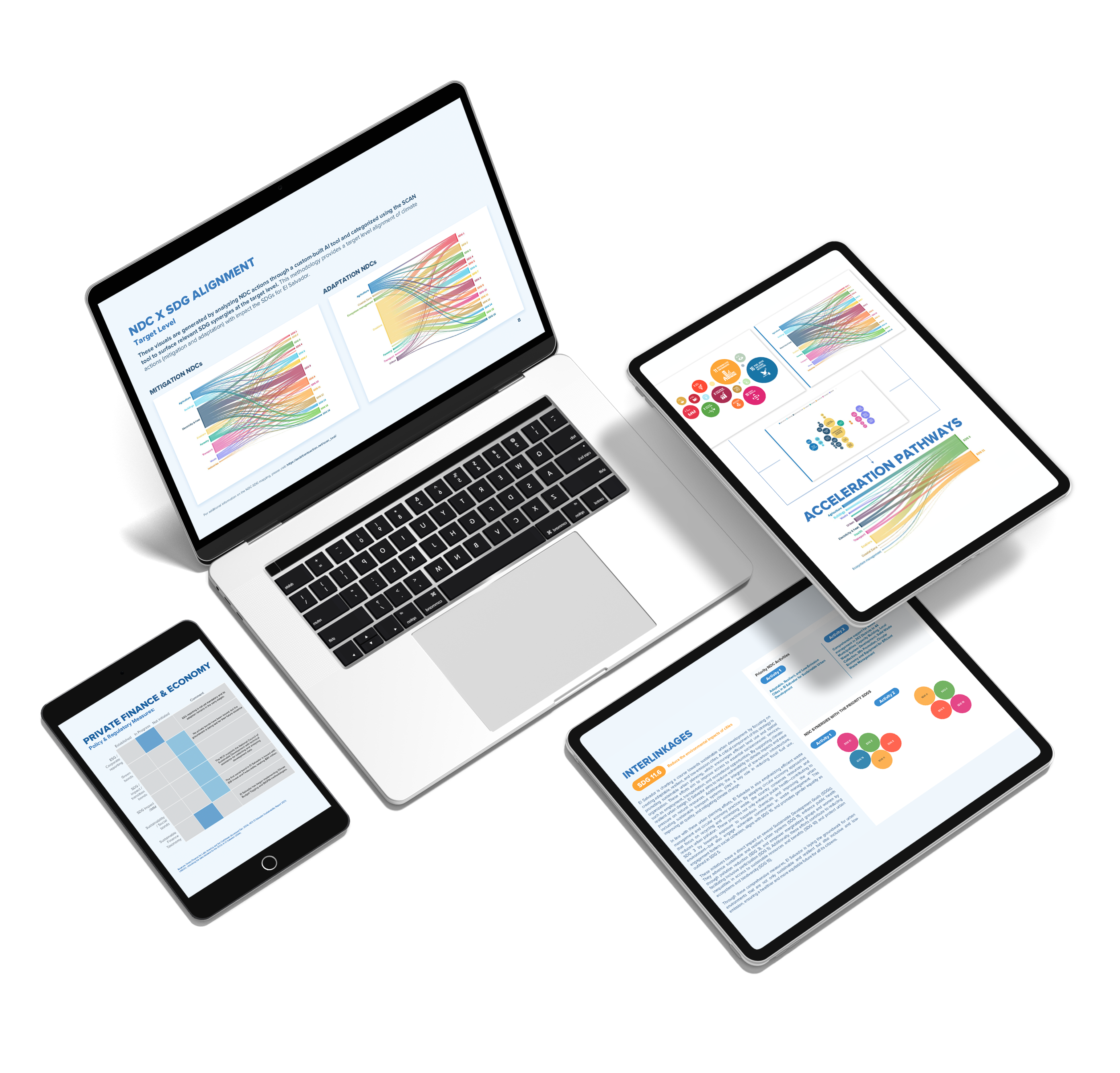HOW DO WE ACHIEVE
OUR GOALS?
Let's find out.
An integrated approach to accelerate the SDGs.
The SDG Push Framework includes two flagship products:
The SDG Push Diagnostic tool combines data, AI and systems intelligence through four key features to identify SDG synergies.
SDG Push Acceleration Pathways are customized and modular and build upon the Diagnostic to co-create and model policy actions that zero-in on accelerating national development goals.
A collection of resources to support SDG Push assessments - with tools that help you map policy alignments, determine budget implications, and realize data enhancements to optimize the mapping of goals and targets.
view guidance documentSDG Push is a key flagship of UNDP’s integration role. Its acceleration
approach comprises multiple stakeholders and was tested for rigor and
relevance across a variety of development environments.
Combining digital and dialogic innovation, SDG Push identifies policy
‘accelerators,’ that build common ground for development progress and policy
actions that drive transformation change.
UNDP defines development pathways as integrated courses of action that countries pursue to achieve sustainable and inclusive development.
These pathways are shaped by economic, social, environmental, and governance choices that align with the overarching goals of human development and the 2030 Agenda for Sustainable Development.“Resilience, well-being and sustainability are the three vital ingredients for
human development today. The SDGs are the catalyst for inclusive and low carbon
growth”
Achim Steiner, Administrator
Each report stems from national priorities and challenges that countries navigate daily. The reports deliver a playbook, showing the policy choices made by governments under tight fiscal and financial constraints. Integrating multiple data sources allows for the analysis of SDG trends, national priorities, interlinkages, and potential futures, pointing to macro-patterns and SDG pathways that will endure beyond 2030.
Acceleration is powered by interlinkages, and UNDP’s 95 Insights Reports use the SDG Push Diagnostic to identify policy combinations with
the best potential to accelerate progress. This helps countries navigate complex and often
colliding development challenges.
Learn more about SDG Insights
See how your country is doing

The NDC x SDG Insights Reports are the latest tools made available through the SDG Push initiative, explicitly built to answer the increasingly urgent need to integrate climate action with the broader development agenda.